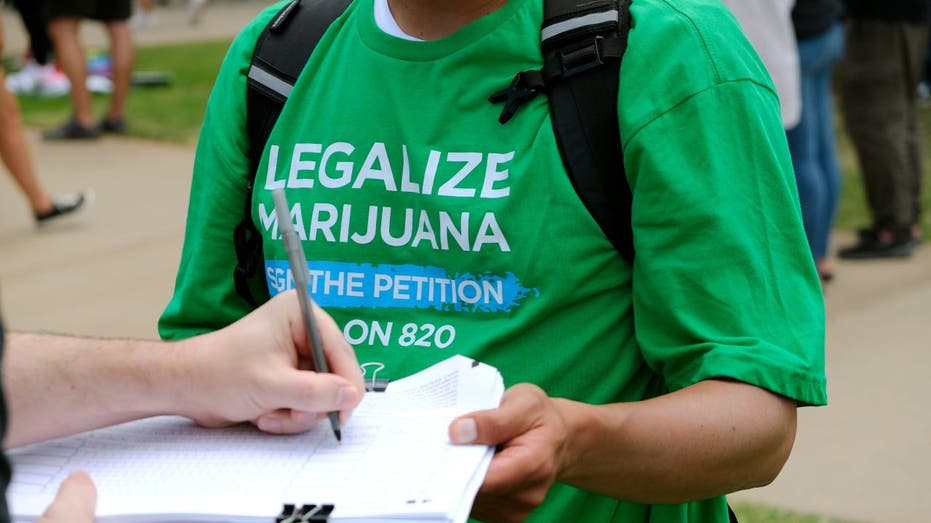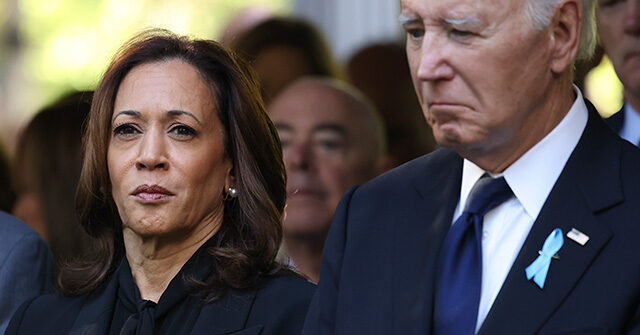War and the Cost of Groceries
Paying to fight other governments' battles is a domestic issue and should be on November 5. The post War and the Cost of Groceries appeared first on The American Conservative.

War and the Cost of Groceries
Paying to fight other governments’ battles is a domestic issue and should be on November 5.

During Wednesday’s CNN Town Hall, the Democratic presidential candidate, Kamala Harris, was asked a pretty straightforward question about progressives recoiling from the Biden administration’s apparent inability—or unwillingness—to use U.S. leverage with Israel to bring an end to the civilian carnage in Gaza.
Asked what she thought about Democratic voters who say they are likely voting third party “or staying on the couch, not voting at all because of this issue,” the vice president told CNN’s Anderson Cooper, “I am not going to deny the strong feelings that people have. I don’t know that anyone who has seen the images, who would not have strong feelings about what has happened.”
“But I also do know that for many people who care about this issue they also care about bringing down the price of groceries,” she added.
Her attempt at a sleight of hand, abruptly shifting from the deaths of nearly 43,000 people and the displacement of an entire population of 2 million in the Gaza Strip, to the cost of milk and bread at Safeway, was one of the cringier moments of the evening. She followed that with a litany of attacks on Donald Trump, right down to his “fascist” assault on women’s reproductive rights, but never bothered to return to the main premise of Cooper’s question, which zeroed in on the anger coming from Arab-American voters in swing states like Michigan—and beyond—according to polls.
But she isn’t all wrong. Americans are frustrated with the cost of groceries, despite what the mainstream media says is the “cooling” of inflation. They don’t feel the easing at the market, the gas pump, or at big box stores like Wal-Mart and Target, which for years had provided lower cost items for middle- and lower-income families.
Harris can almost be forgiven for acting like a typical politician eager to tap-dance furiously away from an issue she can’t in good conscience explain or justify, but Cooper blew an opportunity to exploit her little awkward transition from the foreign to the domestic. They are one and the same, and if you don’t think that sending billions of dollars of weapons to Israel after years of sending arms and cash to Ukraine doesn’t in some way affect Americans’ consternation at the cash register, then we need to talk.
In 2021, the average American family (the middle 20 percent of income earners) paid $17,902 in taxes to federal, state, and local governments—of that, $10,391 went to Washington and the federal bureaucracy. According to BLS data at this time, the “middle 20 percent” was a family earning between $46,500 and $78,000 a year.
Some 60 percent of Americans believe their tax burden is too high and there appears to be no realistic plan for lowering it, at least not right now. High taxes for this income bracket means taking a bigger chunk out of their take-home pay, and, if that is not enough, they get whacked at tax time. That means paying for the basics—choosing between steak and ground beef, when to buy new clothes for the kids or pull the trigger on home repairs—can depend on how much is in the bank. Buying on credit, with interest rates still in the stratosphere, is the bleaker but still heavily used option, another layer of extraordinary burden on the family finances.
So where American tax dollars go and how much should be of great interest to the voter.
Since the Hamas attacks on Oct 7, 2023, the U.S. has given Israel $17.9 billion in military aid, according to the Costs of War Project at Brown University. This sum includes the annual $3.8 million Israel normally gets, plus a $14.1 billion supplemental package passed by Congress in April. The aid includes direct sales and drawdowns from Pentagon stockpiles, but most of the money is used for grants under the Foreign Military Financing program, which does not need to be paid back. According to the Stimson Center, Israel is eligible for “Cash Flow Financing,” which allows it to use these grants to finance multi-year purchases without having to pay for weapons entirely up-front.
Typically, Congress would have to approve each major weapons transaction, but the Biden administration this year has greenlit hundreds under the $25 million threshold for reporting to Congress, so tons of weapons have literally flown to Israel under the radar of the legislative branch (not that lawmakers, even Democratic ones, have put up much resistance). The Costs of War report suggests that much of this might not be included in the $17.9 billion total.
Israel isn’t sparing a cent. In its effort to “destroy Hamas,” by May of this year Israel had dropped more weight in bombs than what laid waste to Hamburg, Dresden, and London combined during the Second World War. As of December, Israel had fired 29,000 air-to-surface missiles at Gaza. Only half of them were precision guided; the rest were American-made “dumb bombs” that are indiscriminate in nature. At that point, some 18,000 people had been killed and 51,000 wounded in a matter of two months.
In addition to the tens of thousands of missiles and bombs (all the way up to the 2,000-pound variety), shells, tank rounds, small arms, defense systems, shoulder-fired rockets, F-35s fighter aircraft, army vehicles, and even fuel provided, the U.S. more recently gave Israel its most advanced missile defense system, the THAAD (Terminal High Altitude Area Defense), which costs U.S. taxpayers anywhere from $1 billion to $1.8 billion per battery. The Pentagon is also sending 100 military personnel to man the system.
This gets to the U.S. cost of the war: it has been estimated that Washington has spent an additional $4.9 billion increasing its own military presence in the Middle East in the last year, including leading a “coalition” of countries against the Houthi attacks on commercial shipping in the Red Sea. The Houthis say they won’t stop until Israel stops blasting away Palestinians in Gaza. Rather than use the leverage of billions of dollars in aid to push for a ceasefire to end the civilian bloodshed, the U.S. appears content to fire off $2 million missiles at cheap Houthi weapons that seem to be in endless supply over the last year.
All of this activity—which, as Israel has stepped up its bombing campaign of Lebanon, and now Iran, appears to be unending—is in addition to the $175 billion in military and other aid that U.S. taxpayers have given for the war in Ukraine since 2022. Despite some efforts to push the conflict towards a negotiated solution, the Washington establishment, apparently undeterred by domestic fiscal considerations, is gung-ho to keep fueling it “for as long as it takes.”
Does anyone ask how long Americans “can take it”? While most pundits are correct that voters will more likely have the economy than foreign wars at the top of mind when they vote, others, including Harris, are dead wrong when they suggest one doesn’t have anything to do with the other. We are all paying for it. Other than printing more money (which yes, Washington does), Uncle Sam will need tax revenues to keep funding these conflicts at the pace they are going today.
Higher “prices at the grocery store” might be easier to stomach if we knew that our hard-earned income wasn’t being sent to fight other governments’ battles with no effort or influence put to ending them. In fact, the generous and unconditional nature of our giving has had the opposite effect. Israel has expanded its bombing campaign to five countries total—all while American taxpayers are being taken to the cleaners.
The post War and the Cost of Groceries appeared first on The American Conservative.
What's Your Reaction?
















